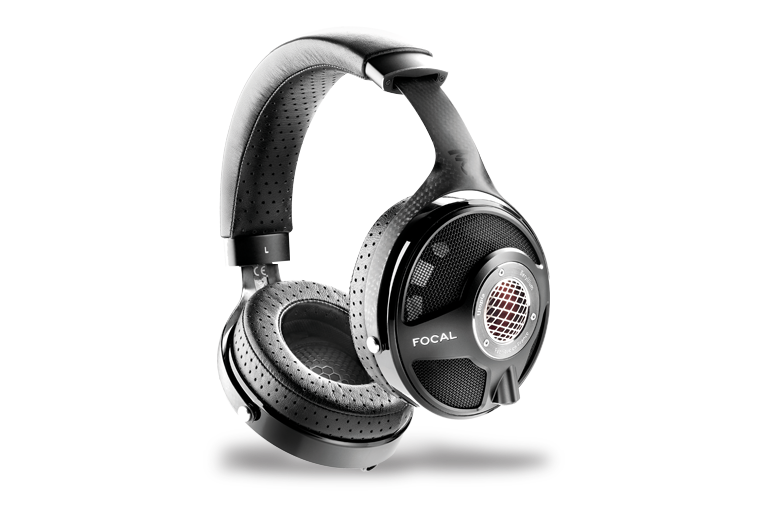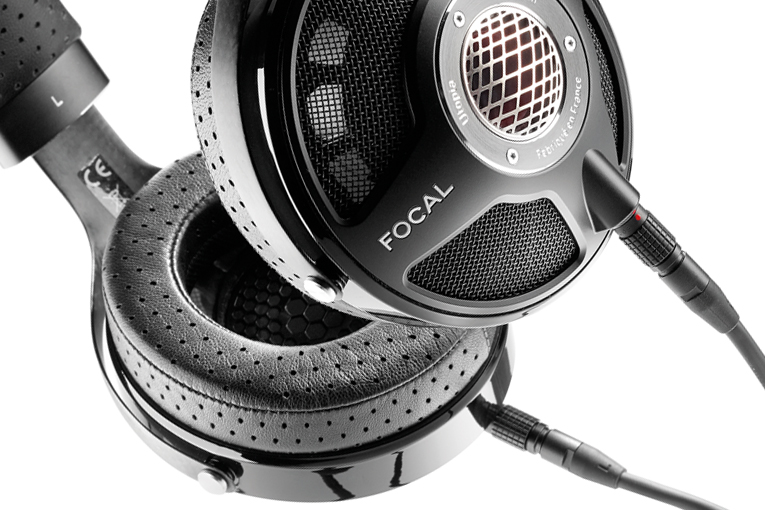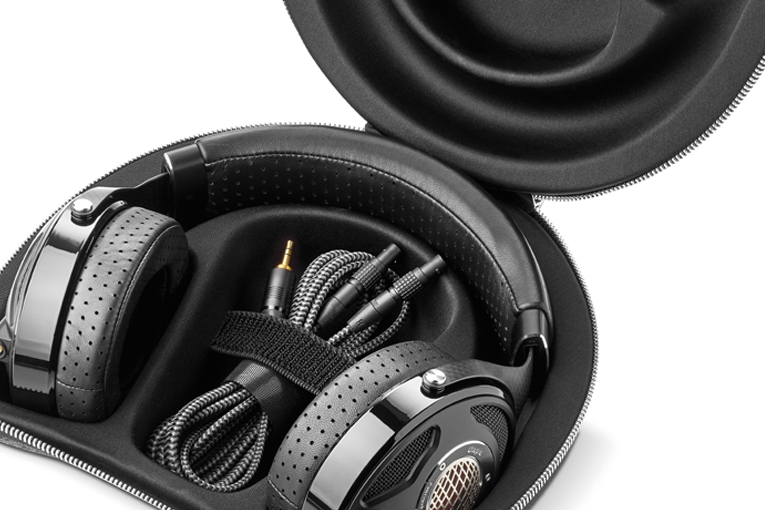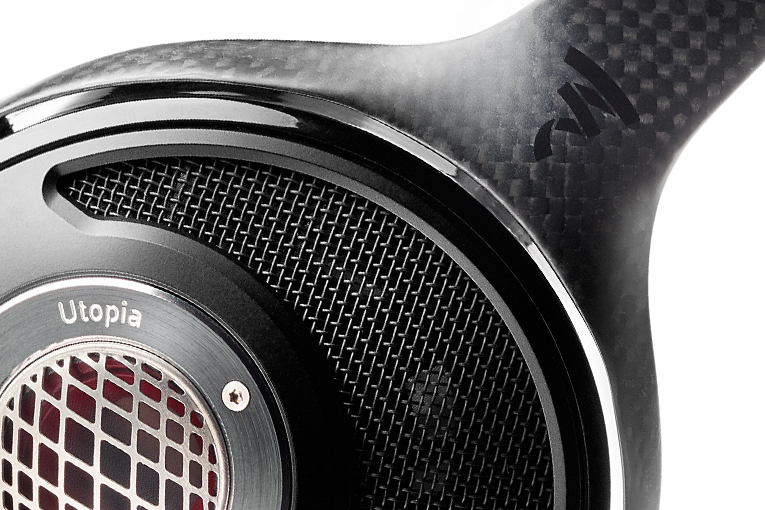Sound: 









Value: 









(Read about our ratings)
Measurements can be found by clicking this link.
 With this review, I’m violating one of my long-established rules: never review a product after a lot of other people have. I figure, with so many opinions already out there, who’ll care about mine? And how will anyone even find my review with so many others grabbing the top spaces of their Google search? That’s why I never reviewed the Utopia, Focal’s top-of-the-line headphone model that debuted in spring of 2016 -- I didn’t submit my sample request early enough, and by the time Focal had a set to send, there were already at least a dozen reviews posted. But when Focal sent me a pair of Utopias to use to test the Arche DAC-headphone amplifier, and SoundStage! founder Doug Schneider suggested I take this chance to do a formal review of the Utopias, I didn’t hesitate.
With this review, I’m violating one of my long-established rules: never review a product after a lot of other people have. I figure, with so many opinions already out there, who’ll care about mine? And how will anyone even find my review with so many others grabbing the top spaces of their Google search? That’s why I never reviewed the Utopia, Focal’s top-of-the-line headphone model that debuted in spring of 2016 -- I didn’t submit my sample request early enough, and by the time Focal had a set to send, there were already at least a dozen reviews posted. But when Focal sent me a pair of Utopias to use to test the Arche DAC-headphone amplifier, and SoundStage! founder Doug Schneider suggested I take this chance to do a formal review of the Utopias, I didn’t hesitate.
Why? Mainly because I’d heard them only briefly at audio shows, and wanted to dig in a little deeper. Especially after Tyll Hertsens -- the Coleman Hawkins of headphone reviewing -- called them the “World’s Best Headphone.” After my thoroughly delightful experience with the Focal Stellias, I wanted to see if the Utopias ($3999 USD, or $4400 with carrying case and balanced cable) were really as good as Tyll said, and I also wanted to see how they stack up against some of my favorite high-end models.

Focal’s other high-end headphones largely sprung from the Utopia design, so the pitch -- as elaborated by Focal headphone product manager Mégane Montabonel in my column last month -- is basically an ultra-light, ultra-stiff beryllium cone, attached to the frame with a lightweight suspension that allows plenty of excursion with better damping than that provided by typical headphone drivers, i.e., Mylar diaphragms glued directly to the frame. The cone has an “M” shape, which makes it flatter and, Focal claims, stiffer.
The driver is not particularly large -- just 40mm in diameter -- and its housing is suspended within the earcup, so everything around it is mostly air. It’s almost like a bare headphone driver just floating half an inch away from your ear.
Impedance is rated at 80 ohms, which is just a little high (although my measurements paint a different picture), and sensitivity at 104dB with a 1mW signal, which is very high for high-end headphones. High impedance and high sensitivity is an unusual combination, so I was curious to see how the Utopias might fare with everyday source devices, such as tablets and smartphones.

Focal Naim America, the North American distributor, also offers the $3999 version of the Utopia headphones in a $5000 package deal with the Arche DAC-amp, which cuts $1499 off the price of the amp. Focal is also offering a $1000 voucher on purchase of the Arche to all Utopia owners through the end of 2020.
In the box
The $3999 version of the Utopias comes packed in a black faux leather presentation case with a 10' (3m) cable tipped with a 1/4" (6.3mm) stereo plug on the source end with snap-in mini-XLR connectors on the headphone ends. The $4400 version doesn’t include the presentation case, but it does include something I find far more useful: a carrying case made from thermoformed plastic covered in gray tweed fabric. This version includes two cables: a 10' (3m) cable with a balanced four-pin XLR connector, and a 4' (1.2m) cable with a 1/8" (3.5mm) plug and a 1/8"-to-1/4" adapter.

Use
The Utopias are very, very comfortable. They’re big and not especially lightweight, but the earpads have a just-right (for me, at least) firmness. The clamping force was just enough to keep them in place without mashing my head, and the earpads’ interior openings are sized generously enough even for large ears like mine.
I’ve seen a previous review claim the Utopias “demand top-quality partnering equipment,” but I think this is an assumption based on their price, because they’re not difficult to drive. Just to see what would happen, I plugged the Utopias straight into my Samsung Galaxy S10 smartphone, and to my surprise, I got very good results: a full, undistorted sound with just enough volume for most music. I listened to a few hours of jazz this way, and albums such as John Scofield’s Swallow Tales (24-bit/96kHz FLAC, ECM/Qobuz) sounded so good that it never occurred to me to upgrade the experience with a decent amp. I did get more volume and bass kick on rock tunes when I connected an AudioQuest DragonFly Cobalt DAC-headphone amp (reviewed on sister-site SoundStage! Simplifi) between the phone and the headphones, but with jazz and other lighter fare, straight into the phone sounded quite good.

For most of my listening, though, I used the Utopias with Focal’s Arche amp in Voltage mode -- without using the amp’s mode that’s custom-tailored to the Utopias, because I wanted to hear what the headphones could do on their own.
Sound
While I was testing the Arche, I had plenty of chances to listen to the Utopias, and by and large, I really liked what I heard. I especially loved that the Utopias -- like the Stellias, but unlike many audiophile headphones -- sounded great on a wide range of music, from beautifully recorded orchestral albums to highly synthetic pop tunes.
“Rain on Me,” the recent dance-pop hit by Lady Gaga with Ariana Grande (Chromatica, 16/44.1 FLAC, Interscope/Qobuz), isn’t the kind of thing audiophiles play, but there’s no reason audiophile headphones shouldn’t be able to play it well. The Utopias certainly could. The overall tonal balance sounded essentially flat, with no readily audible colorations, plenty of bottom end, and a huge, spacious sound. I could hear lots of little details in the song -- for example, that they apparently used an electric bass (or electric bass sample) for the bass line, rather than a synth. The soundscape through the Utopias was so huge and deep that I was moved to note, “It seems more like something magically conjured out of thin air than a multitrack mix done in a studio.”

Right away, I wanted to see how the Utopias’ performance compared with that of the other headphones I had on hand, so I grabbed two other high-end open-back models: Audeze’s LCD-Xes (fitted with Dekoni Audio earpads) and HiFiMan’s HE1000 V2s. All three presented “Rain on Me” in a way that I enjoyed, but differently. The Dekoni-padded LCD-Xes had a lot more bottom-end kick than either the Utopias or the HE1000 V2s, and were basically more fun to listen to, but through the LCD-Xes, I lost some of the details I noticed with the Utopias. The HE1000 V2s let me hear even more of the detail in that electric bass sound, and even let me hear that the keyboard used in the tune was likely a MIDI controller playing a piano sample and a clavinet sample simultaneously. They also brought out just the slightest amount of sibilance or buzziness in the singers’ voices; whether that’s a characteristic of the HE1000 V2s or something in the recording that they revealed, I don’t know. The tune remained danceable, even though the HE1000 V2s had slimmed the bottom end down substantially.
Through the Utopias, jazz trumpeter Ambrose Akinmusire’s “Roy” (on the tender spot of every calloused moment, 24/96 FLAC, Blue Note / Qobuz) -- a simple arrangement featuring trumpet, piano, bass, and drums -- sounded completely straightforward, clean, clear, and natural. I loved the intimate sense of space; through the Utopias, it was easy to hear that “Roy” was recorded in a relatively small but very good-sounding studio. Again, the HE1000 V2s gave me more detail -- more zing in the cymbals, in particular -- and the LCD-Xes gave me a mellower, more relaxed presentation. Which is best is, of course, up to the listener, but the Utopias certainly seemed to strike the most neutral balance; you might say they commented less on the music than the other headphones did.

R.E.M.’s jangle-pop classic “7 Chinese Brothers” (Reckoning, 24/192 FLAC, IRS/Qobuz) gave the Utopias another chance to strike the right tonal balance, and they took it. They made R.E.M. sound kick-ass -- but not too kick-ass, which would make R.E.M. not sound like R.E.M. There was just enough bass for me to hear the whomp of the kick drum and floor tom that open the tune, but not so much that it obscured the unmistakable top-end growl of Mike Mills’s Rickenbacker electric bass. The vocals sounded super-clear with no sibilance or excessive chestiness, and the guitar cut through to lead the band (and the listener) through the tune, just as it’s supposed to in this case.
On the one tune I’m always sure to play through every speaker and pair of headphones I test -- Tracy Chapman’s “Fast Car” (Tracy Chapman, 16/44.1 FLAC, Epic/Qobuz) -- the Utopias’ tonal balance sounded right about in the middle of what I’m used to hearing. And that’s a very good thing, because it shows Focal didn’t try to goose any particular frequency range to give the headphones a distinctive sound of their own. But while their tonal balance was comparable to that of average well-tuned headphones, they sounded a lot better than most of the other headphones I’ve heard, bringing out more detail in Chapman’s voice without adding any sibilance or harshness.

That’s not to say the Utopias nailed every cut I spun -- when I played the orchestral recording “IV. Orgy of the Brigands,” from Berlioz: Harold in Italy featuring Pinchas Zukerman with the Orchestre de Paris, Daniel Barenboim conducting (24/96 FLAC, Sony Masterworks / Qobuz), they sounded a little on the bright side. All the detail was there, and I could easily perceive the size and acoustics of the recording venue, but the aggressive violins, with little input from the bass section to balance them out, sounded a little blarey. This is a very tough recording to get right, though -- the HE1000 V2s sounded nearly as bright (although they brought out the specific placement of instrumental sections in the soundstage better), and even the fat-sounding Dekoni-padded LCD-Xes seemed a little thin on the bottom end.
Comparisons
As Californians are still mostly avoiding mingling until the coronavirus pandemic subsides, it’s not yet practical for me to use outside listeners, so I’ll instead add some comparison notes.
I’ve already noted my comparisons with the Audeze LCD-X and HiFiMan HE1000 V2 headphones. But the headphones I wish I could have compared with the Utopias are the Meze Empyreans ($2999), which, while only 75 percent as costly, exhibit a similar level of craftsmanship and innovation in their design. Sadly, the Empyreans went back to their rustic ancestral home in Romania, or maybe to some other reviewer, but I did compare the Empyreans with the Stellias, which have a little bit of extra midrange kick around 1 to 2kHz. I heard similar things in my comparisons of the Stellias with the Utopias, so I think the Utopias and Empyreans have a somewhat similar vibe, with the Empyreans having a little tilt up in the bass and down in the treble (i.e., a mellower balance) relative to the Utopias.

Conclusion
Are the Utopias the “world’s best headphones” like others have claimed? No -- well, not now, at least -- but they are among the world’s best headphones. I doubt there’s anything on the market that would clearly beat the Utopias in a controlled, multiple-listener test, and I’d be surprised if anyone didn’t like the Utopias -- although I suspect some listeners might find that a different headphone design suits their tastes a bit better. The Utopias’ combination of a neutral, natural tonal balance with wonderful detail and natural, spacious soundstage, along with their outstanding comfort and the fact that they sound great with practically any amp (or no amp), makes them one of the safest recommendations in the world of high-end headphones.
. . . Brent Butterworth
Associated Equipment
- Smartphone -- Samsung Galaxy S10
- DAC-amplifiers -- Focal Arche, iFi Hip-dac
Focal Utopia Headphones
Price: $3999 USD, $4400 with accessories package
Warranty: Three years parts and labor.
Focal
BP 374, 108 rue de l’avenir
42353 La Talaudière Cedex
France
Phone: (+33) 4-77-43-57-00
Focal Naim America
313 Rue Marion
Repentigny, QC J5Z 4W8
Canada
Phone: (800) 663-9352
Website: www.focal.com





